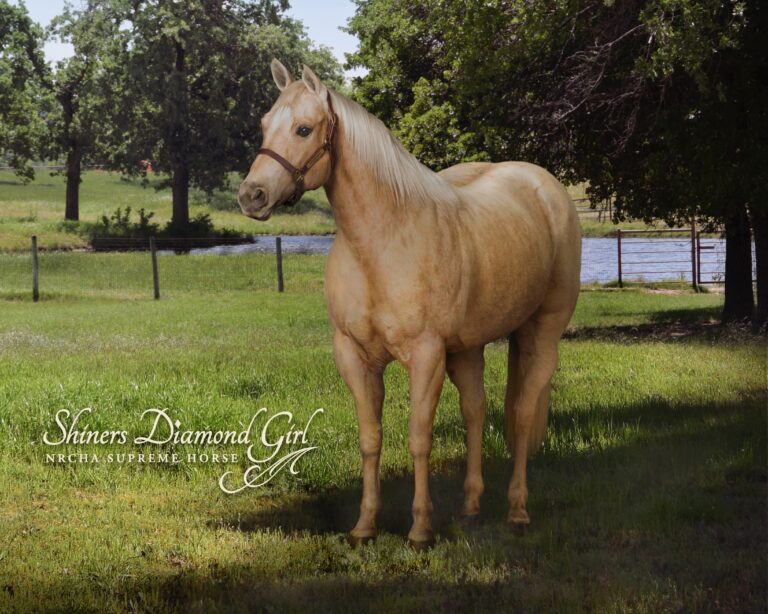Asking your horse to slow down on a circle may sound easy. Keeping him relaxed, balanced, and upright with his shoulders while doing so isn’t easy at all. In fact, it’s natural for a horse to want to drop onto his front end when he slows down. It’s also natural for him to tense and brace with his body, as he anticipates bit pressure. A tense, unbalanced horse spells trouble on a reining pattern—he’ll be unable to successfully perform upcoming maneuvers.
[WATCH: Speed Transitions with Bud Lyon]
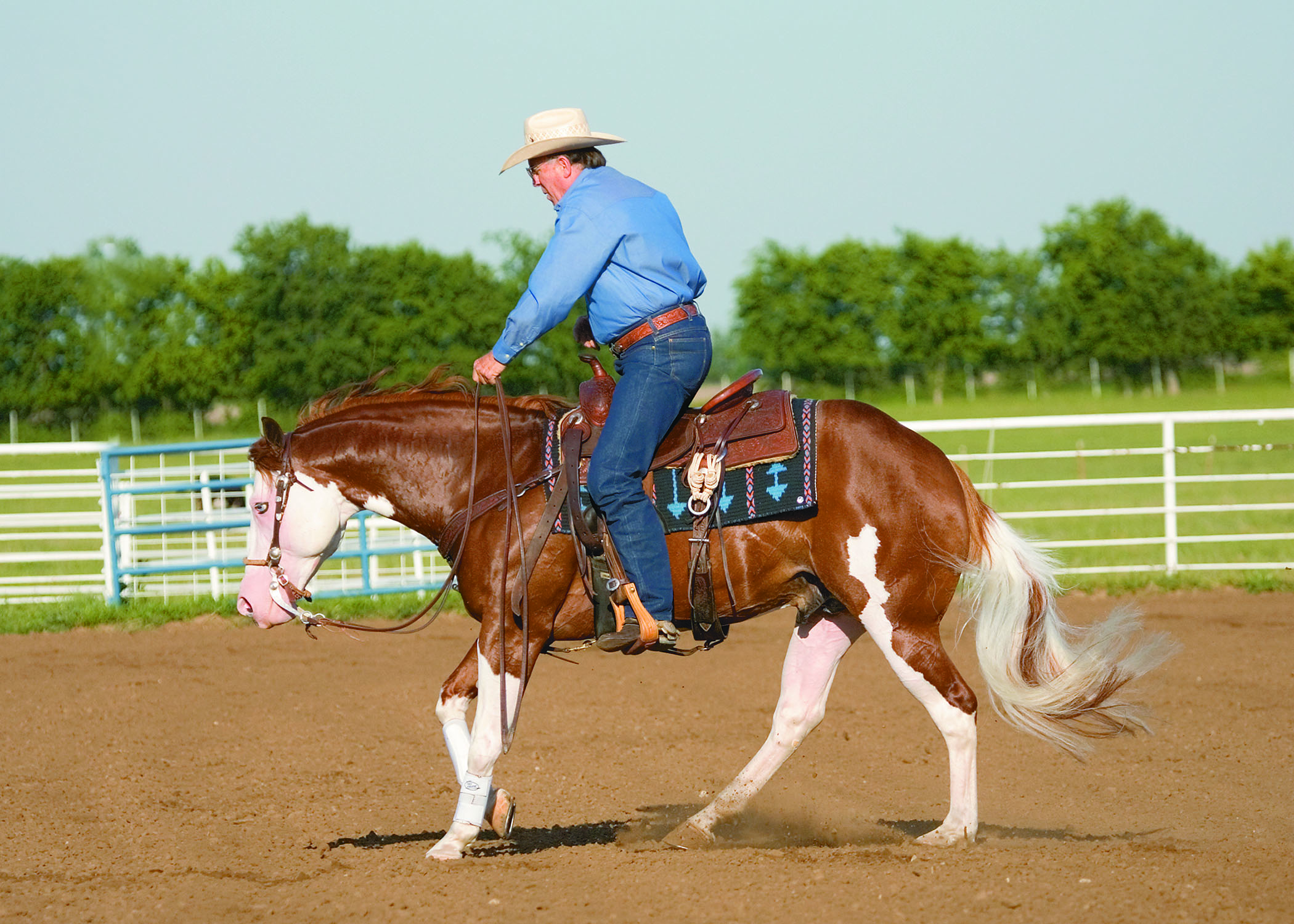
The exercise I’m about to give you will help your horse remain balanced as he slows down, by encouraging him to do so in response to your body weight, rather than a rein cue. It’ll also help him stay relaxed on his circles, by using the circle as a reward.
You’ll gallop your horse on a straight line, in perfectly straight alignment. When you approach the circle, you’ll sit up and use a verbal cue to ask him to slow down. If he fails to slow down, you’ll correct him by redirecting him across the circle’s center and asking again (and again), rather than pulling on his face.
With repetition, your horse will seek the slow-down reward, and will learn to “hunt” the relaxing circle that accompanies it. In doing so, he’ll maintain the balance and guidability needed for a plus-point run.
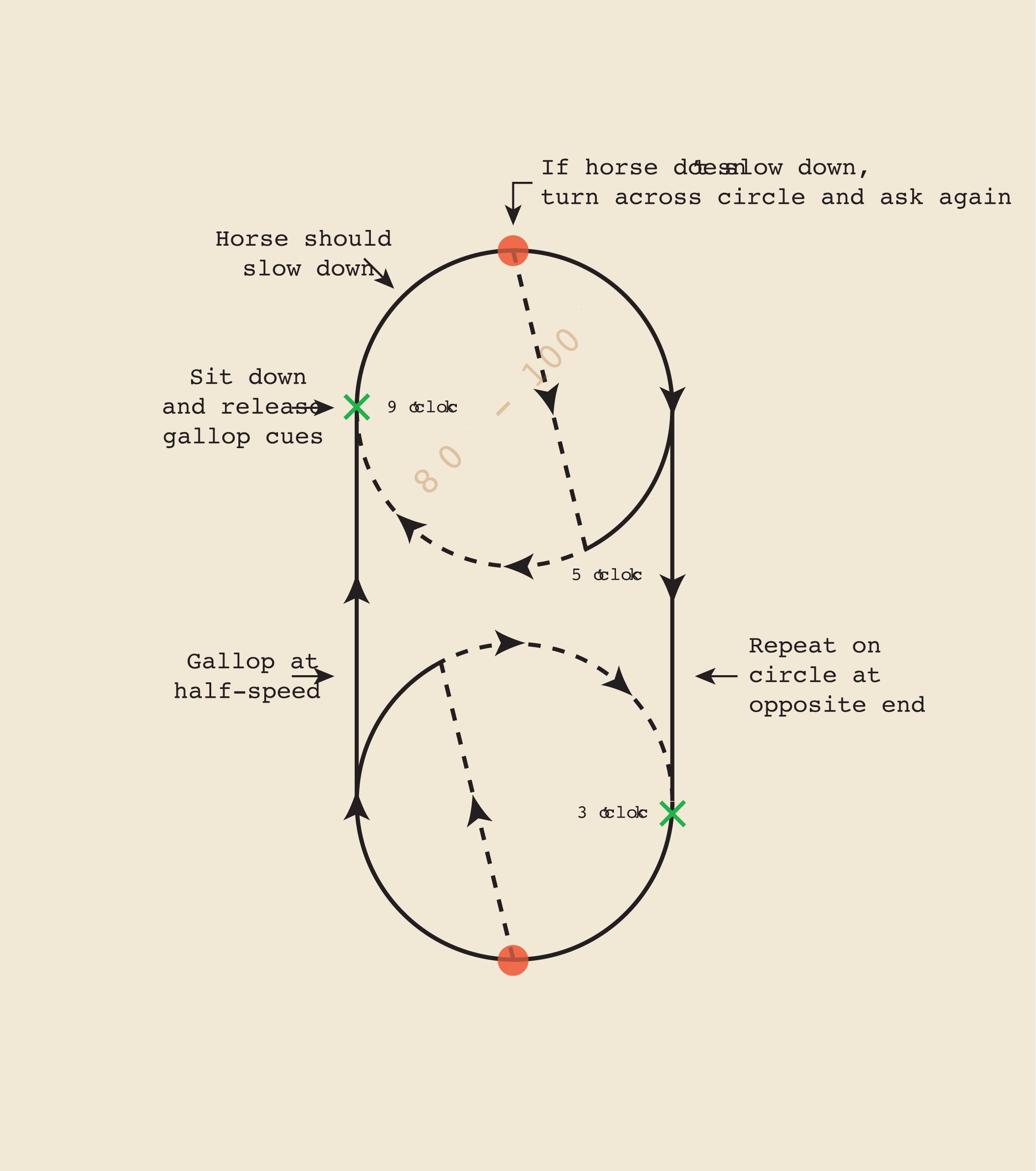
Event appeal:
Reining, working cow horse.
Goal: To teach your horse to slow down in response to your back-and-down weight shift in the saddle, rather than relying on bit pressure. To have him do so with his weight rocked back over his hind end as he stays perfectly aligned between your reins and legs on the circle’s perimeter.
Benefit: You’ll not only net the kind of hands-free, fast-to-slow transition that wows judges and spectators, but you’ll also teach your horse to stay relaxed and balanced on each circle. That means he can pull off dynamic speed transitions, and will be perfectly aligned for the upcoming maneuvers, such as lead changes and sliding stops.
[READ: Fix Lead-Change Anticipation]
1. Warm up your horse by loping around your work area on both leads. You want him as relaxed as possible before you start, so this lesson will be a positive one. Trying to teach a fresh horse subtle slow-down cues could result in tension and a fight, which is the opposite of your goal.
As you lope, concentrate on using your aids to keep him perfectly centered between your reins and legs, so he remains balanced. Once he’s carrying his head at a natural level and is tuned in to you, you’re ready to begin the exercise.
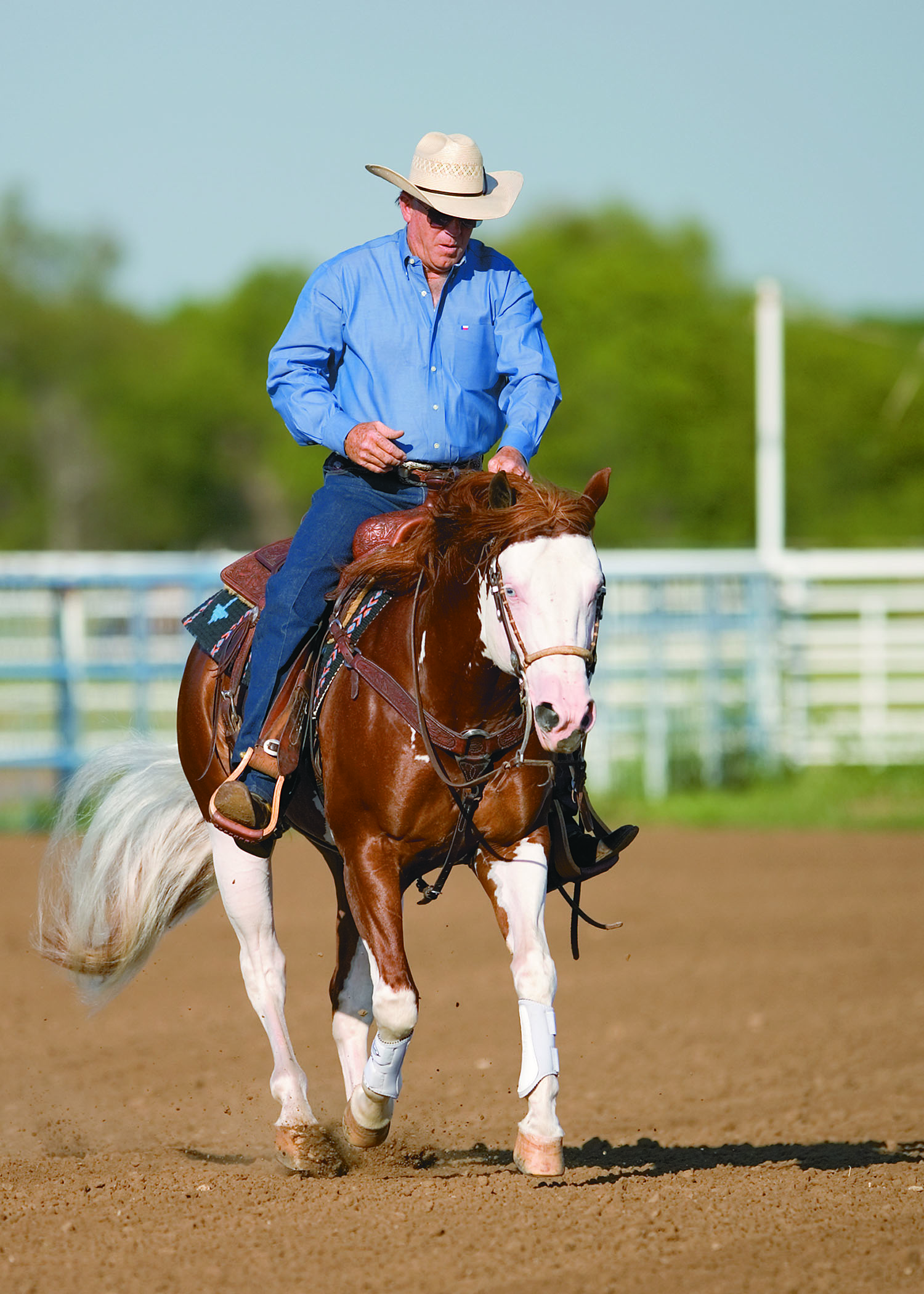
2. See the diagram above. Pick up a gallop that’s about half your normal fast-circle speed. Ask your horse to maintain that speed by tipping your shoulders slightly forward, with your weight centered over your stirrups. “Brush” with your lower legs in rhythm with his stride, to encourage the forward thought, and to help maintain cadence.
My horse is hunting “forward” with his nose. He’s in straight alignment, with his weight balanced over his hocks, so he’s able to drive deep beneath his body with his hind legs (look how compressed his body is!), leaving his shoulders free to reach into the stride. His level neck tells me he’s relaxed and willing.
3. Picture an 80- to 100-foot circle at the far end of your work area as the face of a clock. Maintain your half-speed gallop on a straight-line approach to the circle, keeping your horse upright and balanced. When you reach the 9 o’clock mark, release your gallop cues, tipping your shoulders back, over your hips, and sinking your weight into your seat pockets as you say “easy,” or another verbal cue of your choice. (Avoid saying “whoa,” which means “stop now!”)
This is the reaction you’re looking for: Your horse instantly accepts your “invitation” to slow down (it’s less work than the gallop), by sinking his weight farther over his hocks and slowing his leg speed. If this is his response, congratulations! Lope a slow circle, then guide him to the circle’s center point. Bring him to a stop, and allow him to stand a minute or two as a reward. Repeat at the opposite end of the arena, then on the opposite lead.
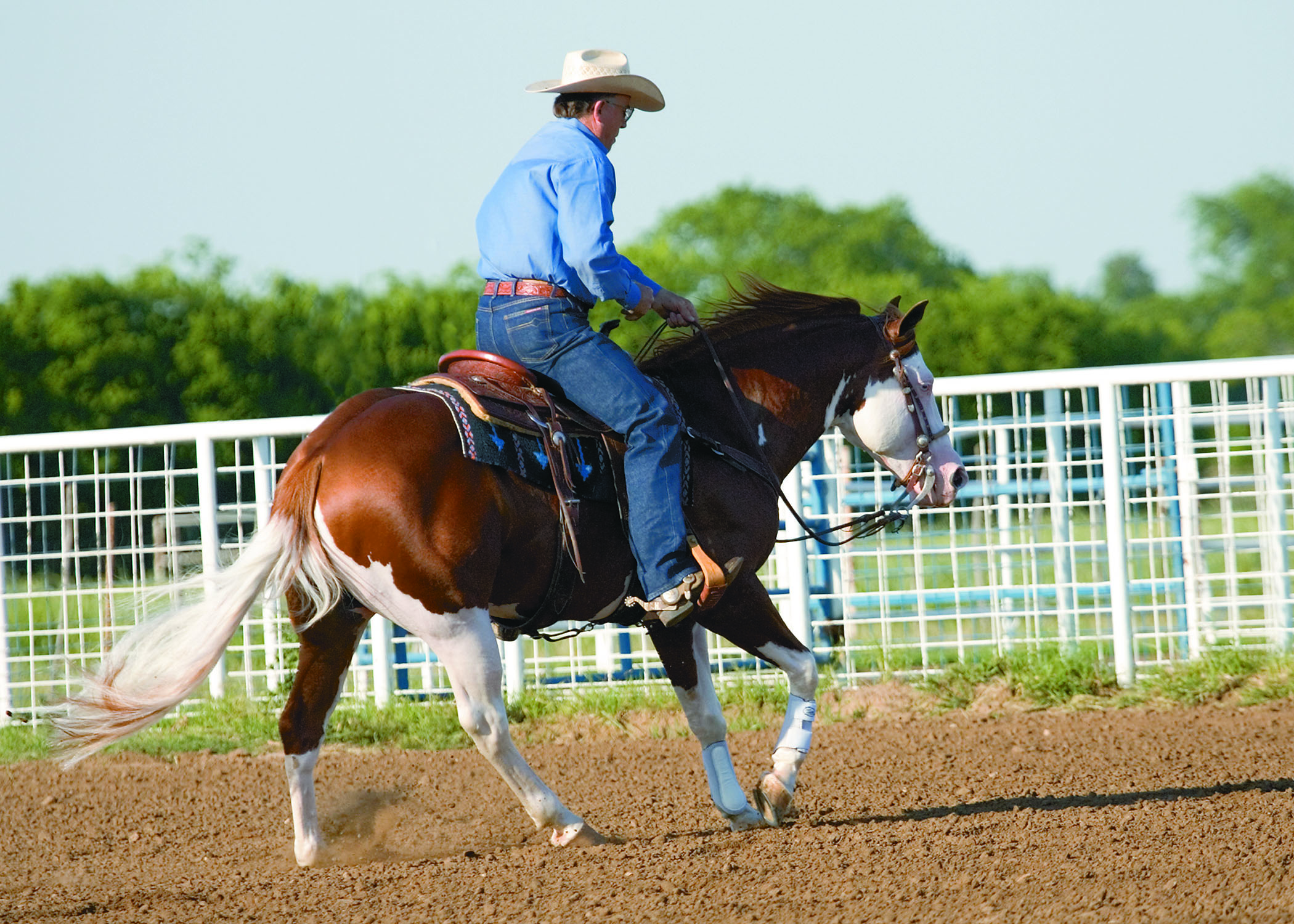
4. If, however, your horse gallops through your slow-down cues, avoid the urge to pull on his face, which would cause him to tense up and brace. Instead, urge him into a slightly faster gallop. Turn him on a diagonal line across the circle’s center (see diagram, pg. 32), picking up the circle at roughly the 5 o’clock point. Gallop around the circle, exiting on a straight-line approach toward the arena’s opposite end. Repeat your slow-down cues at the 3 o’clock point of that circle, and again, on another circle, or until your horse takes you up on your offer to go slow.
5. With time and repetition, you’ll get a fast-to-slow transition like this one, which will help you plus-point your circle maneuvers. Just look at the loop in my reins, and my horse’s level-neck, balanced response. Do you see any tension here? Nope.
6. In fact, as my horse shows, you’d be able to get this dynamic transition without a bridle! And then, my friends, you’ll truly have the competitive edge
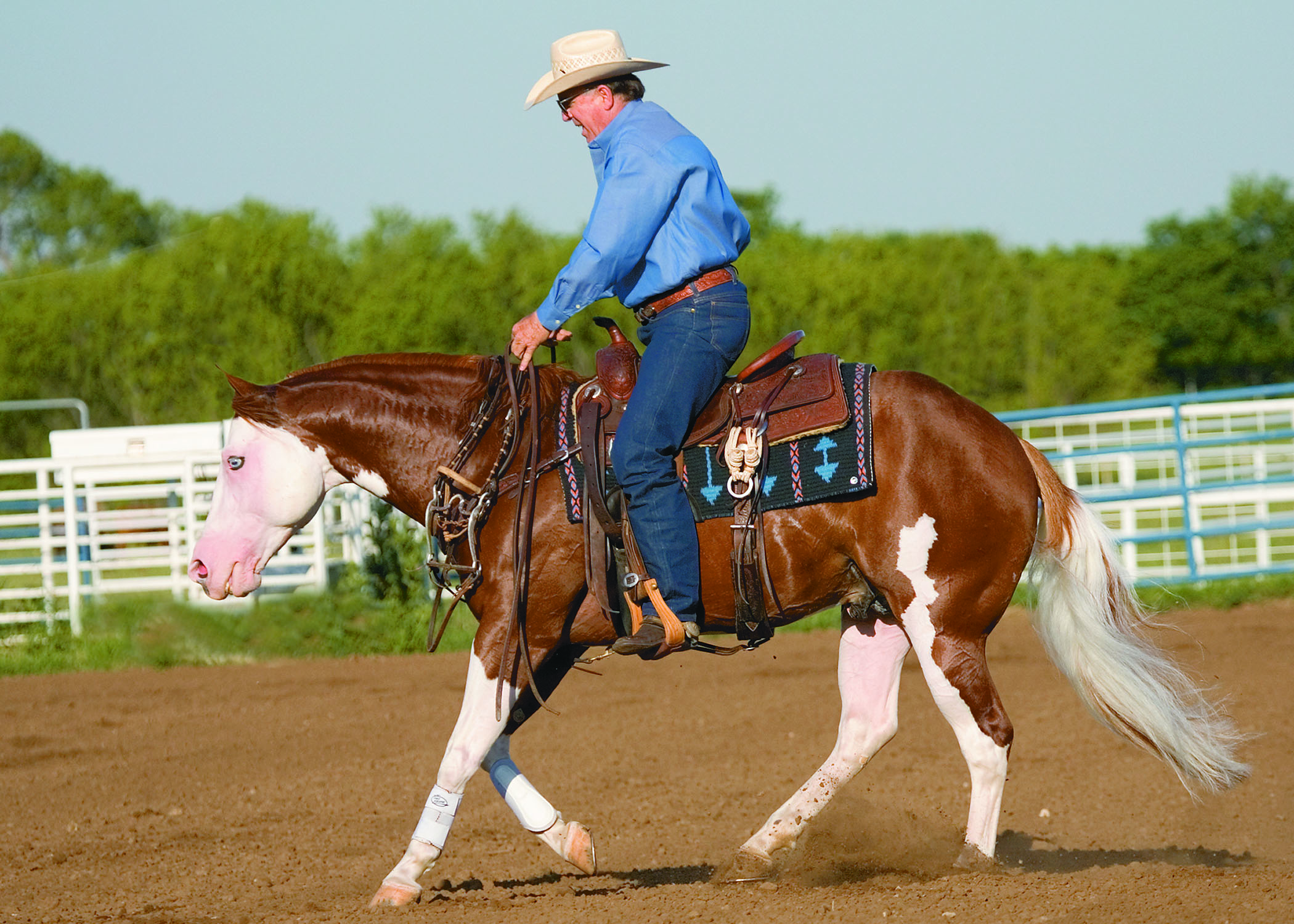
STOP THAT LEAN!
If, as you’re performing this exercise, you feel your horse drop his shoulders to the outside or inside of the circle (you’ll feel pressure against your inside or outside leg), perform the following correction. Lift your rein hand up, as shown—without applying backward pressure. Instead, maintain light contact (this is not punishment, but rather a correction), then drive him into that contact with your legs (using slightly more pressure on the leg he’s leaning into), building into a half-speed gallop.
[READ: Rate & Speed Control Matters]
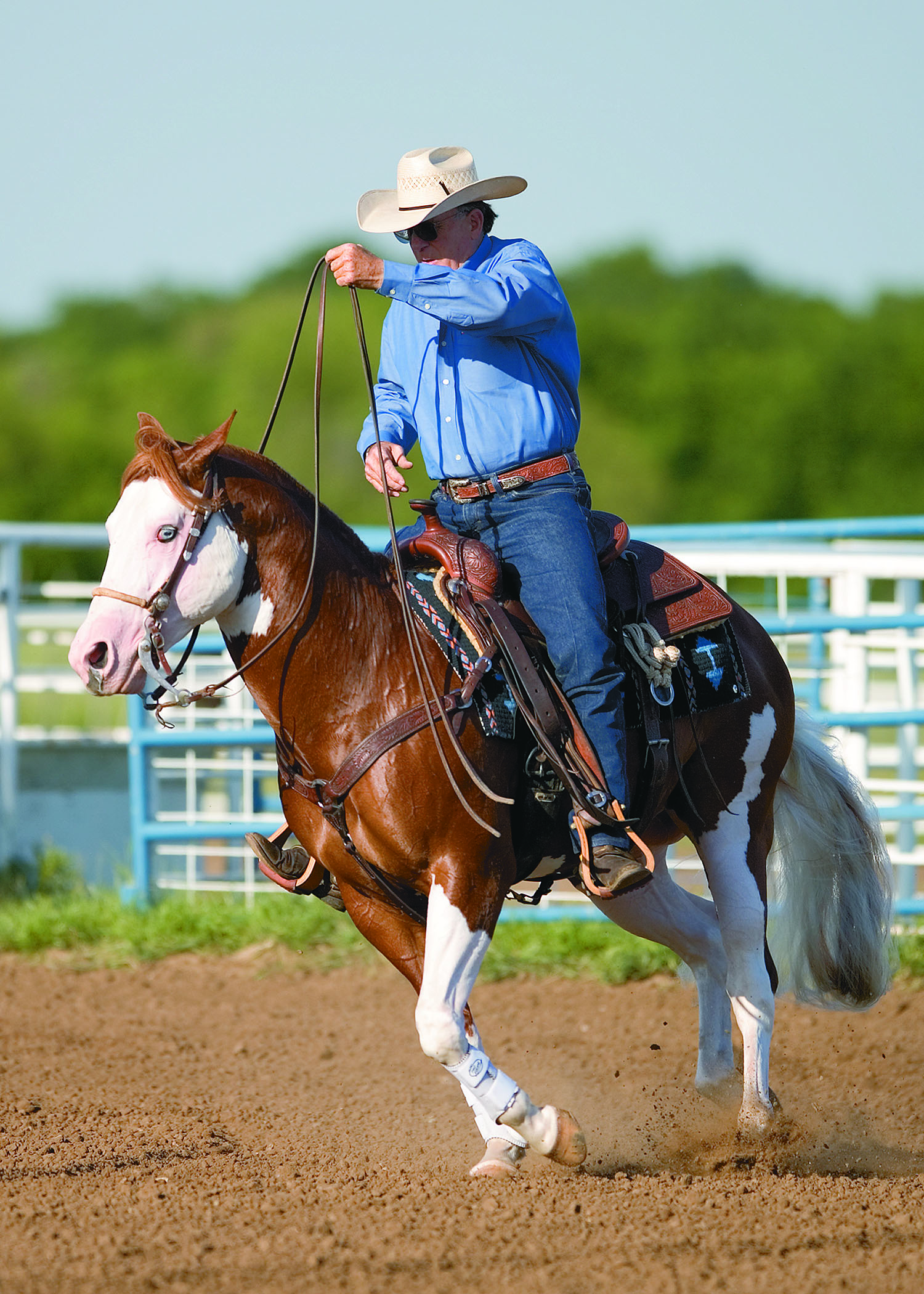
The leg-to-bit pressure compresses his body, rocking his weight over his hindquarters and helping him rebalance. The additional speed encourages him to drop his weight even further over his hind end (picture an accelerating speedboat), to reach deep beneath his body with his hind legs. This frees up his shoulders to realign with the rest of his body.
Release the correction as soon as you feel his body re-align. Repeat as needed, being careful not to jab him in the mouth, which would result in the kind of tension and resentment that’s counterproductive.

